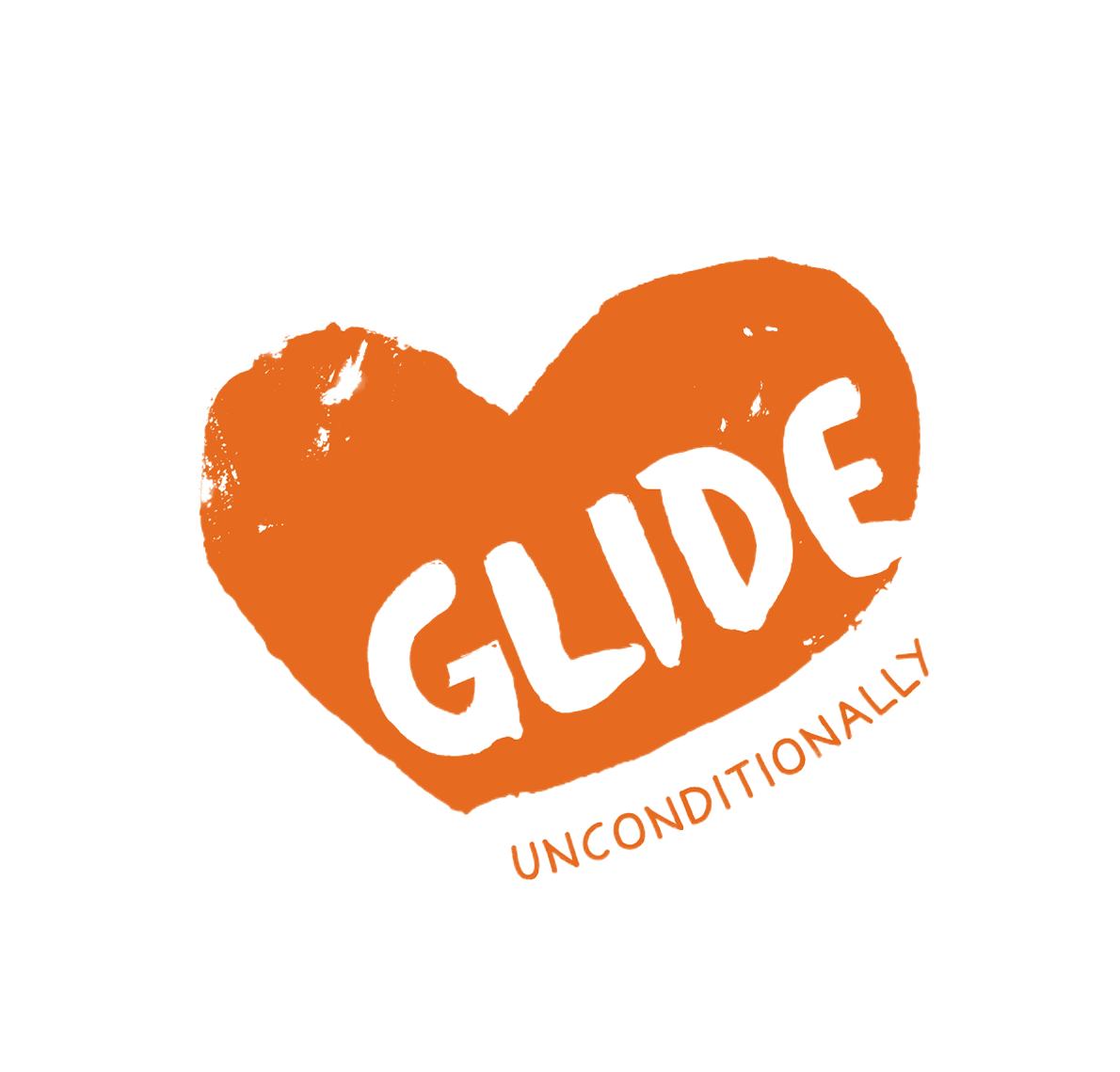There is no single right path for recovery from substance use.
Rather, recovery exists along a spectrum — from safer use and harm reduction all the way to full abstinence. At GLIDE, we embrace that full continuum, with a goal of reducing harm, saving lives, and supporting people in building healthier futures on their own terms.
As GLIDE President and CEO Dr. Gina Fromer puts it, “There’s no one-size-fits-all approach to recovery.”
How GLIDE Supports Recovery
As GLIDE founder Reverend Cecil Williams liked to say, “We are all in recovery.” We might be addicted to work, addicted to distractions, or addicted to a substance of some kind– but addiction and recovery are a universal part of the human condition. There is no “us and them.” Reverend Cecil didn’t want folks to judge people on the street for their addictions– he wanted us to realize how much we all had in common.
GLIDE’s Health Access and Recovery Team (HEAT) is at the forefront of addressing the substance use epidemic in San Francisco. Our team offers a variety of services in an effort to meet people where they’re at – everything from medications for opioid use disorder (MOUDs) to referrals to detox services. And in September of 2025, we started a contingency management program for folks who want to overcome addiction to stimulants, like methamphetamine.
We also offer a range of abstinence-based recovery services for those who need it: Narcotics Anonymous, Alcoholics Anonymous, and Cocaine Anonymous.
GLIDE believes recovery from substance use is a spectrum, and we serve all parts of that spectrum. Harm reduction services, sober housing and abstinence-only recovery programs, all have their part to play in the City’s recovery. Models which exclude or stigmatize those still using drugs can push people further into isolation, unsafe use, and overdose risk. That’s why it’s so important to have the full spectrum.
The Need for Wraparound Services
Helping folks address their substance use or addiction requires more than just a one-time meeting. That’s why at GLIDE, we focus on the whole person, not just their addiction. If we can get people in the door with our harm reduction or health services, then we can build our relationship with them over time. We can help them find housing, test them for transmissible diseases, help them towards employment and stability.
Black Men Over 55 Disproportionately Affected by Substance Use
Systemic racism perpetuates inequity in overdose deaths. In San Francisco, black men over the age of 55 are dying from overdose at a disproportionately higher rate– and the disparity is worse in San Francisco than in any other major city.
That’s why one of GLIDE’s priorities is opening “The Shop,” a barbershop that will connect our low-income clients not only with free haircuts, but with low threshold case management and emotional support. Barbershops are research-proven effective targeted interventions for community-building and stabilization in the lives of older Black men specifically, and they also have a proud history in the civil rights movement.
“Love Saves Lives”
In fall of 2025, we hosted a conversation at Manny’s Cafe between two leaders in substance use recovery who sit at opposite ends of the spectrum: one an advocate for harm reduction, and one an advocate for abstinence. Although the conversation was heated, there was something both leaders had in common: a belief that love saves lives. “Love goes a long way for people who are walked over, stepped on, and ignored,” said our President & CEO, Dr. Gina Fromer, who moderated the panel.
Lydia Bransten, CEO of the Gubbio Project, uses her work to help clients access harm reduction services. She understands the need for abstinence-based recovery, but wishes that the abstinence-only camp was more understanding that recovery is a spectrum: “I respect your journey of abstinence. All I’m asking is that you respect our clients’ journeys too, regardless of if they come to recovery in a different way,” she shared.
Recovery organizations should work together: we’re all fighting the same problem – we just have different ways of amending that problem. “You don’t have to agree with me, but our destinations are the same,” Dr. Gina says. “People healthy, off drugs, and off the streets.”
Why This Matters: Saving Lives and Reducing Stigma
The fundamental goal of our approach is overdose prevention. In a city deeply affected by fentanyl and overdose deaths, we have always acted as frontline responders. Our belief is clear: even one overdose is one too many.
We believe our approach helps reduce stigma and shame — both major barriers to seeking help. By not requiring abstinence as a precondition for care, we lower the threshold for engagement, letting more people connect with services earlier.
By embracing multiple pathways to recovery, GLIDE supports individualized journeys. Some will move toward abstinence; others might need the help of medications; others might continue to relapse for years. What matters is that we provide the support and accountability necessary to save lives and break the cycle of addiction.
Recovery requires community. Wherever you are in your recovery journey, you can find a community at GLIDE.
